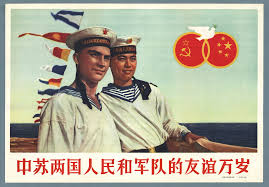Author: William A. Callahan
Affiliation: London School of Economics and Political Science
Organization/Publisher: International Affairs
Date/Place: September 2023/UK
Type of Literature: Journal Article
Number of Pages: 21
Link: https://doi.org/10.1093/ia/iiad174
Keywords: China, International Relations Theory, East Asia and Pacific, International History
Brief:
In this study, the author aims to examine how Chinese sources engage in international relations through an analysis of how they understand themselves and others, especially through their visualization of ‘foreigners’. According to Qin Yaqing, the heart of Chinese foreign policy is an interpretivist ‘identity dilemma’; who is China, and how does it view the world?’ How a civilization defines its identity and culture, and especially how it constructs the insider-outsider binary, affects the interplay of social relations and international relations. Specifically, the author demonstrates that in Chinese civilization foreigners are often depicted as having large noses. With such a nose-focused interpretation of the Other, it is obvious that the ‘external appearance’ and ‘external relations’ are entangled in China.
The ‘face’, according to Chinese scholars of IR, holds a high significance in both Chinese society and diplomacy as a symbolic and social context of status within interpersonal relationships. In this manner, the face is often used in China to distinguish insiders from outsiders in the foreign policy of social relations. In China, relations between the Self and Others are often visualized in terms of different types of noses. In many Chinese cultural artifacts, both old paintings and even modern box-office films, people of Euro-American origin are depicted as ‘large-nosed foreigners.’ This conception arguably forms an “Occidentalism” similar to what Edward Said has written in Orientalism on how European images of the Middle East visualize non-European in a hierarchical fashion. However, there has been a limited examination of China’s depictions of foreigners.
Exploring the role of visualization in comprehending China’s foreign policy reveals a multifaceted dimension that significantly contributes to our understanding. The author delineates three pivotal reasons why visualization is instrumental in this regard. First and foremost, visual representations possess the remarkable capacity to thrust crucial issues onto the international stage. In an era where the public can be influenced and swayed through the omnipresent influence of social media, compelling visuals serve as a potent tool for advocacy and awareness. These visuals, when strategically disseminated, can capture the attention of global audiences, shaping the discourse surrounding China’s foreign policy. Secondly, the emphasis on visuals underscores the inherently political nature of representation. The diverse meanings embedded within visual content make it imperative for analysts to dissect and decipher the underlying narratives and nuances, shedding light on the complex facets of China’s foreign policy. Lastly, the interpretation of visuals extends beyond rational analysis, and delves into the emotional resonance that visuals can evoke. Visual content has the innate power to stir emotions and unite individuals, forming what the author aptly terms ‘affective communities.’ These emotional connections can transcend borders, forging a sense of shared experience and concern, which in turn influences perceptions and attitudes towards China’s foreign policy.
Going back to the Tang Dynasty, commonly seen as the apex of Chinese civilization and a model for East Asian governance at the time, foreigners are depicted as possessing ‘deep-set eyes and a high-bridged nose’. The author gave the example of huren figurines, which were massively distributed during that time, and were used as a key template of self/other relations in the Tang Dynasty. The figurines were meant to represent foreigner’s essential difference to the Tang Chinese, and hence their inability to assimilate and co-exist. The dynasty spread the narrative that it was only with the empire’s benevolent rule that the empire’s fractious ethnic groups could come together under one governance. The combination of visualization and the empire’s policy aimed to depict the Tang Dynasty as a tolerant cosmopolitan society.
Another example could be found during the Korean War and the propaganda posters produced by the Communist Party of China (CCP) where images of deep-set eyes and large noses were also prominent. This time, the communist regime used such propaganda to manipulate and explain its policy to a largely illiterate population. The author gave two example of propaganda posters from the Korean War. The first one shows a Chinese army standing beside a Soviet army in warm and vibrant colors to visualize the friendship between the two. Meanwhile, the second poster depicted Chinese kids from different ethnic groups antagonizing a big-nose American child. In the second poster, the ‘American nose’ is not only use to differentiate between allies and enemies, but also used to mobilize a collective feeling of anger, fear, and threat.
As such, the relationship between China’s perception of external appearance and external relations is that it actively constructs the Chinese self-image through a visualization of the Other. The two examples mentioned above suggest that China governs the Other by including and excluding difference, an ‘Occidentalism’ that resonates with the Orientalist mentality in the West. It also shows that there is a strong correlation between China’s ideological ‘world-view’ and its aesthetic ‘views of the world’ in its external relations. Finally, the author rejects the claim that Chinese ideas of world order could be an alternative from the current US-led world order because this study shows that Chinese values are not ‘all-inclusive’ after all.
By: Salman Nugraha, CIGA Research Assistant




